MARKET OVERVIEW
Formwork panels are a critical component in the construction of concrete structures and buildings. The global formwork panels market provides the molds and frames used to shape poured concrete for walls, columns, beams, slabs, and foundations. As infrastructure development accelerates worldwide, the demand for high-quality formwork panels continues to grow.
Formwork panels create a temporary mold into which wet concrete is poured and contained as it hardens. Panels are typically made of wood, steel, aluminum, or fiberglass. They interlock in a grid-like configuration using ties and braces to build the overall concrete form. Panels must withstand concrete pressure while maintaining dimensional accuracy for the cured structure.
Increasingly, constructors are adopting system formwork over traditional site-built wooden forms. System formwork relies on prefabricated modular panels that are erected on-site. These systems boost productivity and enable faster, safer construction of complex structures. As urbanization and massive projects like high-rises, bridges, dams, and stadiums increase globally, system formwork adoption fuels formwork panel market growth.
Asia Pacific currently dominates the global formwork panels market, with many major suppliers based in China. Developing nations across the Asia Pacific region are undergoing rapid development of commercial and residential buildings as populations urbanize. North America and Europe are mature markets for formwork panels used in non-residential construction. The Middle East, Africa, and Latin America present high growth potential as infrastructure investments modernize urban centers.
Trends impacting the global formwork panels market include labor shortages, demand for faster project timelines, and a need for more complex geometries. In response, manufacturers are developing innovative new lightweight panels along with ancillary products like release agents and automated installation systems. Building information modeling aids in formwork design and construction engineering. Plastic and composite formwork promises improved sustainability over traditional materials.
As the formwork panels market evolves worldwide, suppliers aim to provide value-added services and optimized concrete forming solutions. Increasing quality, cost-competitiveness, and on-time delivery gives companies an edge in this essential construction materials sector. With the global demand for landmark buildings and advanced infrastructure projected to accelerate, the market for high-performance formwork panels will continue expanding apace.
Global Formwork Panels market is estimated to reach $9,268.5 Million by 2031; growing at a CAGR of 5.2% from 2024 to 2031.
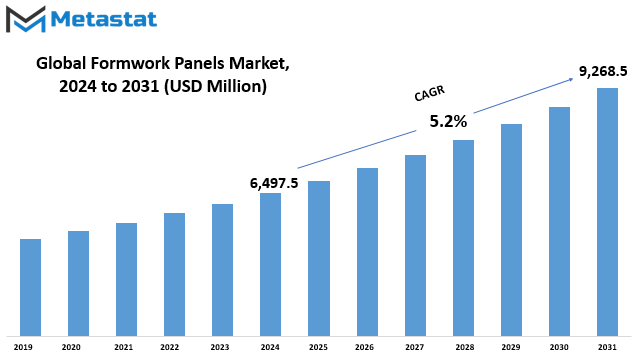
GROWTH FACTORS
The global market for Formwork Panels is influenced by various factors that contribute to its growth. One of the primary driving forces is the increasing demand for construction projects worldwide. As urbanization continues to rise, the need for efficient and reliable formwork solutions has become crucial in the construction industry. This demand is fueled by the ongoing infrastructure development and residential construction projects across different regions.
Additionally, technological advancements play a pivotal role in shaping the Formwork Panels market. Innovations in formwork design and materials contribute to the overall efficiency of construction processes. These technological advancements not only enhance the quality of formwork but also streamline construction timelines. The market benefits from the adoption of modern construction techniques that prioritize speed, cost-effectiveness, and sustainability.
Despite the growth factors, challenges persist in the Formwork Panels market. Fluctuations in raw material prices pose a significant concern for manufacturers. The market is sensitive to price variations, and any abrupt changes can impact on production costs and, subsequently, product pricing. Economic uncertainties, such as global financial downturns, also pose challenges to the market's stability, affecting the investment patterns in the construction sector.
Environmental considerations are another factor that can hinder market growth. Increasing awareness of sustainable practices has led to a demand for eco-friendly construction materials. This shift in preferences may pose a challenge for traditional formwork panels that may not align with stringent environmental standards. As regulations become more stringent, manufacturers need to adapt and innovate to meet the evolving demands for sustainable construction solutions.
Amid these challenges, opportunities emerge that could bolster the Formwork Panels market in the coming years. The growing trend of modular and pre-engineered construction methods presents a lucrative avenue for market players. These methods offer faster construction, reduced labor costs, and increased flexibility, aligning with the modern construction industry's needs. Formwork panel manufacturers can capitalize on this trend by developing solutions tailored to the requirements of modular construction projects.
Furthermore, the increasing focus on infrastructure development in emerging economies opens new possibilities for market expansion. Governments' investments in large-scale infrastructure projects, such as roads, bridges, and airports, create a robust demand for formwork solutions. Manufacturers can strategically position themselves to benefit from these opportunities by establishing strong partnerships and collaborations with key stakeholders in emerging markets.
The Formwork Panels market is driven by the increasing global demand for construction solutions. Technological advancements, economic factors, and environmental considerations shape the market dynamics. While challenges exist, such as raw material price fluctuations and environmental concerns, opportunities arise in the form of modular construction trends and infrastructure development in emerging economies. Market players need to navigate these factors strategically to ensure sustained growth and relevance in the ever-evolving construction landscape.
MARKET SEGMENTATION
By Type
In the global construction industry, Formwork Panels play a crucial role in shaping structures. The market for these panels is diverse, with various types catering to distinct construction needs. The types encompass Aluminum Formwork, Steel Formwork, Plywood and Timber Formwork, and Plastic Formwork.
Aluminum Formwork stands out as a lightweight and durable option. Its versatility caters to diverse construction projects, ensuring efficiency and ease of use. Steel Formwork, on the other hand, offers robustness, ideal for heavy-duty construction. Its durability contributes to a longer lifespan, making it a preferred choice in certain scenarios.
Plywood and Timber Formwork provide a more traditional approach, relying on natural materials. While Plywood Formwork offers a balance between strength and flexibility, Timber Formwork is recognized for its sustainable attributes. These types resonate with a preference for eco-friendly and cost-effective solutions in construction.
Plastic Formwork introduces a modern twist to construction methodologies. Known for its lightweight nature and adaptability, it meets the demands of contemporary projects. Plastic Formwork aligns with the industry’s shift towards materials that not only streamline construction processes but also address environmental considerations.
The dynamics of the global Formwork Panels market are influenced by factors such as construction trends, technological advancements, and sustainability concerns. As construction practices evolve, the demand for specific types of Formwork Panels fluctuates. The market is not static but responds to the ever-changing landscape of construction requirements.
This diversity in Formwork Panels reflects the construction industry’s need for tailored solutions. Each type caters to specific project demands, ensuring that builders have a spectrum of choices to meet their structural and logistical requirements. It’s a testament to the adaptability of the market, where innovation and tradition coexist to serve the dynamic needs of the construction sector.
Furthermore, considerations beyond mere functionality come into play. Environmental consciousness is increasingly becoming a driving force in material choices. The emphasis on sustainability has led to a surge in interest in materials like Timber Formwork and eco-friendly options such as Plastic Formwork. This shift mirrors the broader societal commitment to responsible and sustainable construction practices.
The global Formwork Panels market is a nuanced ecosystem, offering various construction industry options. From the enduring strength of Steel Formwork to the modern adaptability of Plastic Formwork, each type brings its unique set of characteristics. The market’s responsiveness to evolving construction paradigms ensures that builders have access to a diverse toolkit, reflecting the dynamic nature of the industry.
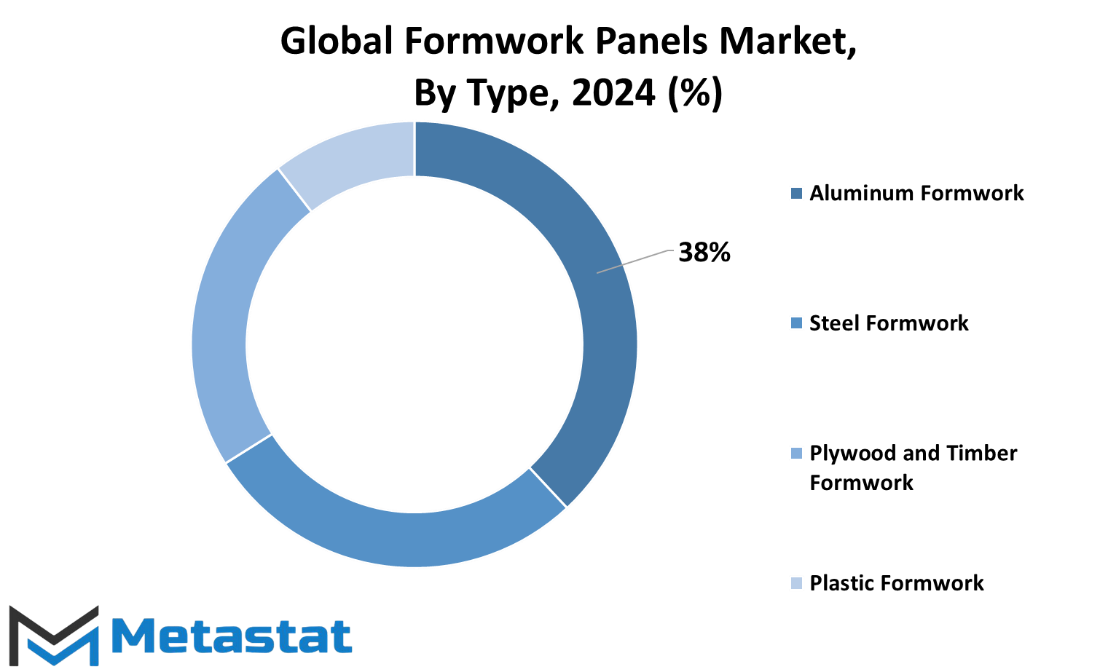
By End-User
The global market for Formwork Panels is segmented based on end-users, categorizing it into Building, Infrastructure, and Commercial applications. This classification allows for a more comprehensive analysis of the industry’s dynamics.
The building sector plays a pivotal role in the demand for Formwork Panels. It encompasses various construction projects, ranging from residential developments to institutional structures. The utilization of Formwork Panels in this domain is crucial for shaping concrete structures efficiently. These panels provide a versatile solution, accommodating diverse architectural requirements within the building sector.
In the Infrastructure segment, Formwork Panels find substantial utility in the construction of bridges, roads, and other public works projects. The robustness and adaptability of these panels prove instrumental in meeting the distinct challenges posed by infrastructure projects. As the global focus on infrastructure development persists, the demand for Formwork Panels in this sector continues to rise.
The Commercial category represents a diverse range of projects, including offices, retail spaces, and hospitality establishments. Formwork Panels contribute significantly to the swift and efficient construction of these commercial spaces. The adaptability of these panels to various architectural designs aligns with the dynamic nature of commercial construction, making them a preferred choice in this domain.
The dynamics of the global Formwork Panels market are shaped by the unique requirements and demands of each end-user segment. The Building, Infrastructure, and Commercial sectors collectively drive the growth and evolution of this market. Understanding the distinct needs within each category is pivotal for stakeholders to navigate the market effectively.
Moreover, the increasing trend of sustainable construction practices is influencing the Formwork Panels market. End-users across all segments are showing a growing interest in environmentally friendly construction solutions. This has prompted manufacturers to innovate and incorporate sustainable materials and practices in the production of Formwork Panels. As sustainability gains prominence in the construction industry, it becomes a critical factor influencing purchasing decisions across all end-user segments.
In addition to this, the geographical distribution of construction activities plays a vital role in the Formwork Panels market. Regions with extensive urban development and infrastructure projects become focal points for market players. Understanding the regional variations in demand allows manufacturers and suppliers to strategize and tailor their offerings according to specific market needs.
The global Formwork Panels market, categorized by end-users into Building, Infrastructure, and Commercial segments, reflects the diverse applications of these panels in the construction industry. The market’s evolution is driven by the unique requirements of each sector, coupled with a growing emphasis on sustainable construction practices. Stakeholders must stay attuned to these dynamics to navigate the market successfully and contribute to the ongoing transformation of the construction industry.
REGIONAL ANALYSIS
In examining the global Formwork Panels market, we observe its division across different geographical regions. North America, for instance, encompasses the U.S., Canada, and Mexico. Moving to Europe, this region consists of the UK, Germany, France, Italy, and the Rest of Europe. The Asia-Pacific segment is further broken down into India, China, Japan, South Korea, and the Rest of Asia-Pacific. Meanwhile, the South America region incorporates Brazil, Argentina, and the Rest of South America. Further, the Middle East & Africa category includes GCC Countries, Egypt, South Africa, and the Rest of Middle East & Africa.
Geographical segmentation serves as a crucial lens through which we gain insights into the distribution and dynamics of the Formwork Panels market. By parsing the market in this manner, we can discern specific trends and patterns unique to each region. This not only aids in understanding regional preferences and demands but also enables businesses to tailor their strategies accordingly.
North America, with its subdivisions of the U.S., Canada, and Mexico, presents a diverse landscape for Formwork Panels. Each country within this region may exhibit distinct market behaviors influenced by local economic factors, construction practices, and regulatory frameworks. Similarly, Europe, comprising major economies like the UK, Germany, France, Italy, and the Rest of Europe, showcases variations in market trends and consumer preferences.
Turning our attention to the Asia-Pacific segment, the inclusion of India, China, Japan, South Korea, and the Rest of Asia-Pacific unveils a vast and dynamic market scenario. The diverse economic landscapes, cultural nuances, and construction practices within these countries contribute to a multifaceted understanding of the Formwork Panels market.
South America, represented by Brazil, Argentina, and the Rest of South America, introduces a unique set of factors influencing the market. Economic conditions, infrastructure development, and regional construction trends all play a role in shaping the demand for Formwork Panels in this part of the world.
The Middle East & Africa category, with its breakdown into GCC Countries, Egypt, South Africa, and the Rest of Middle East & Africa, provides insights into the distinctive characteristics of these markets. Factors such as urbanization rates, government infrastructure projects, and local construction practices contribute to the overall dynamics of the Formwork Panels market in this region.
The global Formwork Panels market unfolds across diverse geographical landscapes, each with its own set of influences and dynamics. Understanding these regional intricacies is paramount for businesses aiming to navigate and thrive in this dynamic market.
COMPETITIVE PLAYERS
The global Formwork Panels market with several key players is shaping its trajectory. Among the significant contributors to this industry are prominent companies such as Doka Group, PERI GmbH, ULMA Construction, Alsina Formwork Solutions, MEVA Schalungs-Systeme GmbH, RMD Kwikform, Hünnebeck GmbH, PASCHAL-Werk G. Maier GmbH, NOE-Schaltechnik Georg Meyer-Keller GmbH + Co. KG, Ischebeck Titan GmbH, Construx b.v.b.a, Faresin Formwork, Sateco SAS, RINGER GmbH, and EFCO Corp.
These companies play a pivotal role in the Formwork Panels market, each bringing its unique strengths and offerings to the table. Doka Group, for instance, is recognized for its innovative formwork solutions, contributing to the industry's growth by providing efficient and reliable construction tools. Similarly, PERI GmbH has established itself as a key player with a focus on comprehensive formwork and scaffolding systems.
ULMA Construction is another noteworthy player, known for its diverse range of formwork solutions tailored to various construction needs. Alsina Formwork Solutions and MEVA Schalungs-Systeme GmbH also contribute significantly to the market, providing advanced formwork systems that enhance construction efficiency.
The market further sees the participation of RMD Kwikform, a company recognized for its engineering expertise in formwork and falsework solutions. Hünnebeck GmbH and PASCHAL-Werk G. Maier GmbH bring their own set of specialized formwork solutions, contributing to the industry's overall diversity.
NOE-Schaltechnik Georg Meyer-Keller GmbH + Co. KG and Ischebeck Titan GmbH are integral players, adding to the competitive landscape with their expertise in formwork technology. Construx b.v.b.a, Faresin Formwork, Sateco SAS, RINGER GmbH, and EFCO Corp. also play vital roles, contributing to the market's vibrancy and meeting the varied demands of the construction sector.
As the Formwork Panels market continues to evolve, these competitive players navigate the industry's challenges and opportunities. Their collective efforts drive innovation and advancements, ensuring that construction projects worldwide benefit from state-of-the-art formwork solutions.
The global Formwork Panels market is a dynamic arena shaped by the contributions of key players like Doka Group, PERI GmbH, ULMA Construction, Alsina Formwork Solutions, MEVA Schalungs-Systeme GmbH, RMD Kwikform, Hünnebeck GmbH, PASCHAL-Werk G. Maier GmbH, NOE-Schaltechnik Georg Meyer-Keller GmbH + Co. KG, Ischebeck Titan GmbH, Construx b.v.b.a, Faresin Formwork, Sateco SAS, RINGER GmbH, and EFCO Corp. Their collective impact on the industry ensures a diverse range of high-quality formwork solutions for the construction sector.
Formwork Panels Market Key Segments:
By Type
- Aluminum Formwork
- Steel Formwork
- Plywood and Timber Formwork
- Plastic Formwork
By End-User
- Building
- Infrastructure
- Commercial
Key Global Formwork Panels Industry Players
- Doka Group
- PERI GmbH
- ULMA Construction
- Alsina Formwork Solutions
- MEVA Schalungs-Systeme GmbH
- RMD Kwikform
- Hünnebeck GmbH
- PASCHAL-Werk G. Maier GmbH
- NOE-Schaltechnik Georg Meyer-Keller GmbH + Co. KG
- Ischebeck Titan GmbH
- Construx b.v.b.a
- Faresin Formwork
- Sateco SAS
- RINGER GmbH
- EFCO Corp.
WHAT REPORT PROVIDES
- Full in-depth analysis of the parent Industry
- Important changes in market and its dynamics
- Segmentation details of the market
- Former, on-going, and projected market analysis in terms of volume and value
- Assessment of niche industry developments
- Market share analysis
- Key strategies of major players
- Emerging segments and regional growth potential



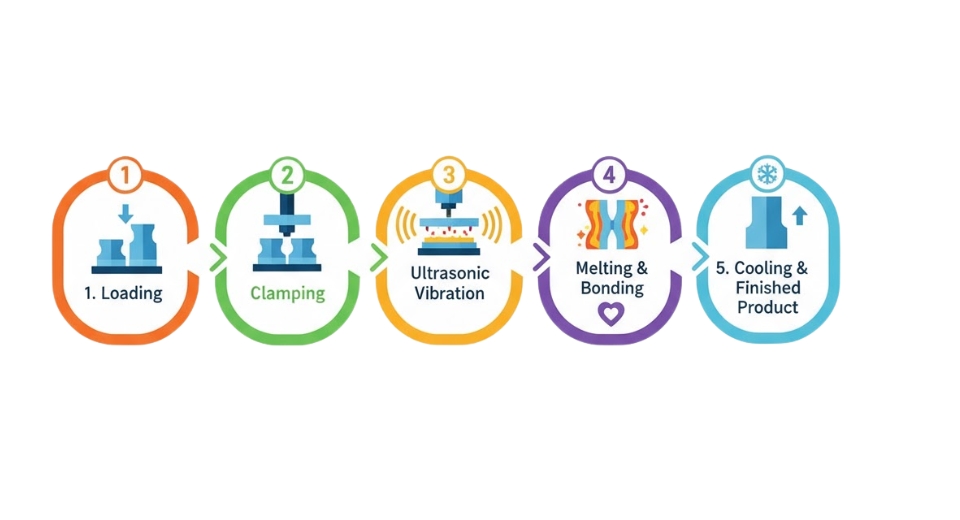
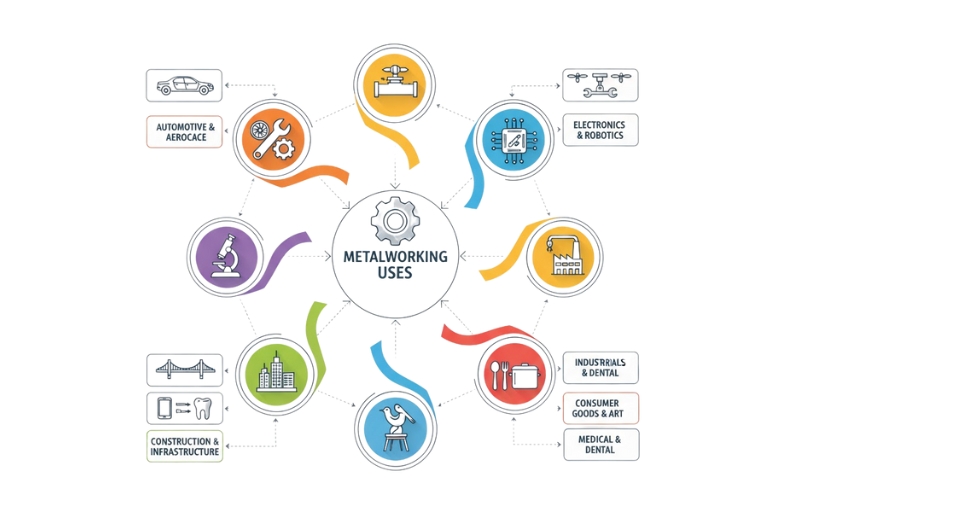
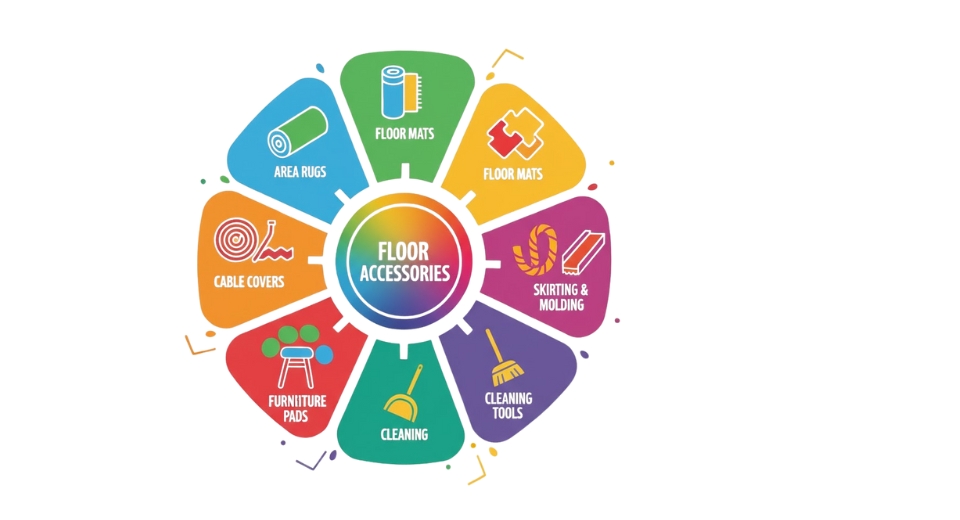
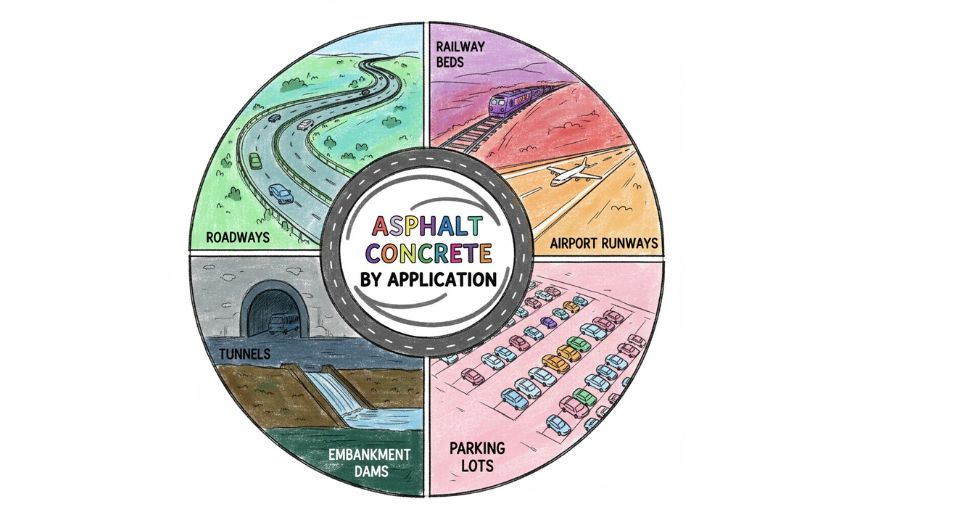

 US: +1 3023308252
US: +1 3023308252






